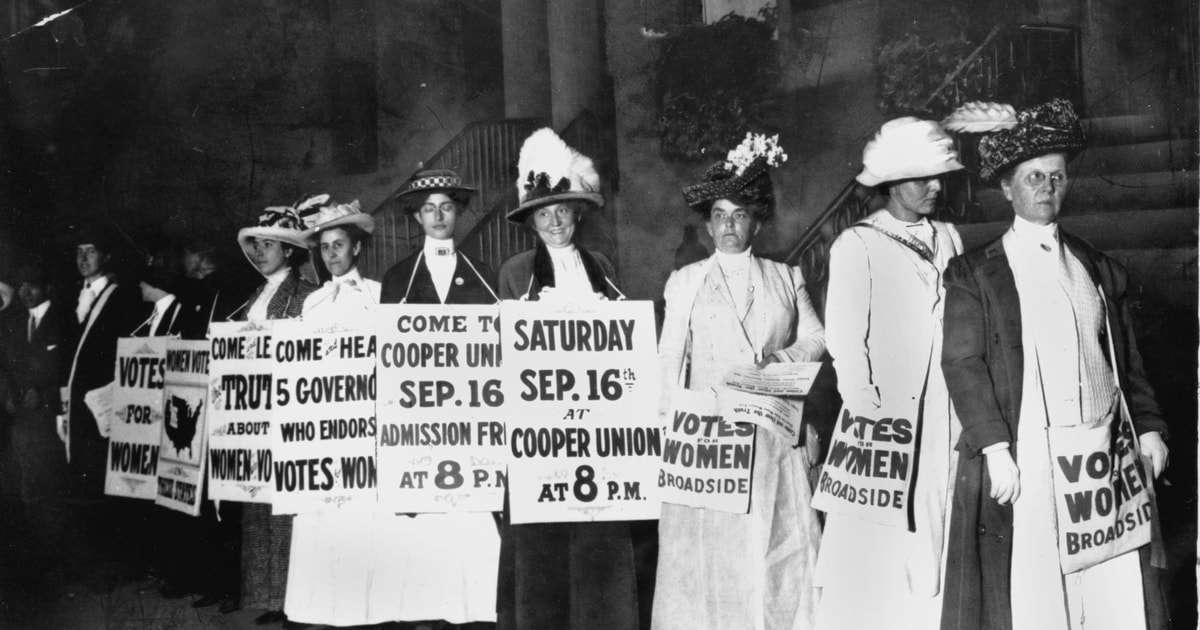Women’s suffrage was a giant leap for democracy. We haven’t stuck the landing yet.
The House delayed the vote as long as it could. The year was 1921, and the U.S. Senate had already passed the Sheppard-Towner Act, which provided funding for programs helping new mothers and babies. A few key congressmen, though, thought the bill contained too much social welfare and too much feminism.
“If the members of Congress could have voted on the measure in their cloak rooms, it would have been killed . . . emphatically,” one senator later told Ladies’ Home Journal.
But whether or not House leadership was ready for feminism, feminism had come barging in the door: The year before, the 19th Amendment had given women the right to vote. Politicians worried about what this new constituent bloc might do, and rushed to show they supported women’s issues. Sheppard-Towner passed, emphatically. The House vote was a landslide, 279 to 39.
Women’s suffrage is sometimes portrayed as the triumphant end of a movement, the hard-won reward for decades of marches, protests, hunger strikes, feeding tubes. Really, it was a beginning. One of many times America has transformed itself to make the government more accountable to more of its citizens, at least in theory.

On the 100th anniversary of the passage of the 19th Amendment, we could think about life a full century ago. But we could also think about life 99 years ago, when the country first started to realize how much power voting women now had, and how they might choose to wield it. We could think about what the amendment changed and what it didn’t.
‘Sex Uprising’
Let’s get the easy repercussions out of the way first, the legislative descendants of the 19th Amendment. Without it, there could have been no Title IX in 1972, which barred discrimination against women in university settings or educational institutions receiving federal funding. There could have been no Lilly Ledbetter Act of 2009, which inched the country toward pay equality.
After the ratification of the 19th Amendment, more women began seeking out public office, particularly at the local level. When, in November of 1920, one Oregon town replaced its entire town council with women, the New York Times headlined it, “Sex Uprising in Yoncalla.”
A thought experiment for women today: Pick a date — maybe Aug. 18, the official day of ratification? — and pause every time you do something you probably couldn’t do if the 19th Amendment didn’t exist. A lot of us wouldn’t make it to our desks at work. Some of us wouldn’t make it past the breakfast table. We’d be felled by our morning pill routine: In a world without the 19th, one assumes that Comstock laws would still consider mail-delivered birth control “obscene.”

The negative reverberations of the 19th Amendment are easy to identify, too. It didn’t help everyone. In the hopes of gaining Southern sympathy for their cause, many white suffragists had made a devil’s bargain. They diminished the contribution of Black suffragists, or insisted that Black women’s unique disenfranchisement was a race issue and not a gender issue, and therefore not under suffrage’s purview.
Historian Liette Gidlow opens her study “Resistance After Ratification” with the story of a Black woman named Susie Fountain who went to her local polling place to register two months after the 19th was ratified. Fountain, who had a college education, was told she hadn’t passed the literacy test.
“The confetti from Nineteenth Amendment celebrations had barely settled,” Gidlow writes, “but Mrs. Fountain’s trip home from the registrar’s office was no ticker-tape parade.”
Enfranchisement revealed women to be heroes, and it revealed them to be selfish, and it revealed them to be the complicated humans men always had been.
The aftermath of the 19th Amendment also did away with the idea that women would vote as a bloc rather than as individuals with different ideas about culture, religion and government. The powerful all-female voting bloc that Congress had feared never entirely came to fruition. While the gender gap in voting is bigger than it’s ever been — in the 2016 election, Trump won men’s votes by 12 percentage points while Hillary Clinton won women’s by the same amount — there’s vast variation in what individual women believe should be important to collective women. It was as true a century ago as it is now. The Sheppard-Towner Act? The only woman in Congress at the time, Oklahoma’s Alice Mary Robertson, opposed it. She said it was government intrusion.
Conservative women and liberal, idealistic and pragmatic, the 19th Amendment created them all.
Meanwhile, the town of Yoncalla aside, white men still controlled the country. An entirely male Congress passed the 19th Amendment (the first female representative, Jeannette Rankin, had been voted out for opposing World War I). Fifty years later, there was still only one female senator and 10 representatives. Fifty years after that, today in 2020, there are 127 voting women in Congress — the most there have ever been, and still only a quarter of the legislature.

The history of women voting is still a history of having representation without being represented. Waiting for mostly male legislators or jurists to determine your access to maternity leave or abortions. Outpacing men in voter turnout in every presidential election since 1980, but noticing how pundits persist in questioning the “electability” of female candidates. Watching as a 2020 field once containing six women slowly dwindled to zero. Settling for a promise by the presumptive Democratic nominee that he will pick a woman to be his running mate.
Wondering if this is what 100 years of progress is supposed to look like.
Changing the country
The Pew Research Center recently published an extensive survey about the 19th Amendment. What did Americans think had changed in the past century, and what hadn’t? Fifty-seven percent of respondents thought there was still more work to do toward gender equality. About 32 percent thought we’d achieved it; 10 percent thought we’d already gone too far. The most jarring number in the poll: about 30 percent of men — 40 percent of Republican men; 20 of Democrats — believed that women’s advancement had come at the expense of their own.
A disappointment, but not a surprise. It’s easy to assume the 19th Amendment benefited women alone, because that’s how we often talk about it: How did women’s lives improve? But we could also ask different questions. Not, how did the 19th Amendment change things for women, rather, how did women, newly empowered, change the country around them?
Ballot box
How can we realize that we shouldn’t incorporate new and different voices into our governance because it’s an act of charity; we should do it because those voices change our nation for the better?
Around the country, when suffrage laws were enacted, local public health spending increased, with money funding door-to-door campaigns to educate the public on preventing infectious diseases like diphtheria and typhoid fever. Child mortality declined somewhere between 8 and 15 percent, the equivalent of 20,000 deaths a year. According to another study, women’s suffrage increased education budgets, which caused children to stay in school longer — particularly children who attended underfunded schools. Spending increased for social programs and charities.
In fact, spending increased in general. Government got bigger.
And why wouldn’t it? For all of the individual laws passed on the heels of women’s suffrage, for all of the dollars disbursed and diphtheria cases avoided, the main influence of women’s suffrage was philosophical: the idea that a nation made of many different kinds of people, in many different conditions, must expand the franchise in order to govern itself well.

Lawmakers could not hide in their cloakrooms. They would have to care about things that didn’t affect them personally, or risk being voted out and replaced with someone who would.
Deeply personal
You can measure the impact of women’s suffrage in dollars and congressional seats, or by estimating its effects on the trajectory of American political thought. But another way to look at the legacy of the 19th Amendment is to remember that, as historic as it was, it was also deeply personal.
I once met a 96-year-old woman who had been born on the day the 19th Amendment was ratified. She liked to tell this story about her grandmother. The first post-19th election came. Her grandfather put on his best Sunday clothes, went to the polling place, and voted for the Democrat. Later that afternoon, her grandmother laid out her own Sunday clothes. The family hadn’t been sure she would vote at all. She’d never discussed politics. But she came home later and announced that she’d voted for the Republican. “I boxed you out,” she told her husband.
At that point in her life, she’d lived through six decades of silence and deference, resigned to the idea that nothing she believed would ever officially matter.
And then one morning, that was different.







